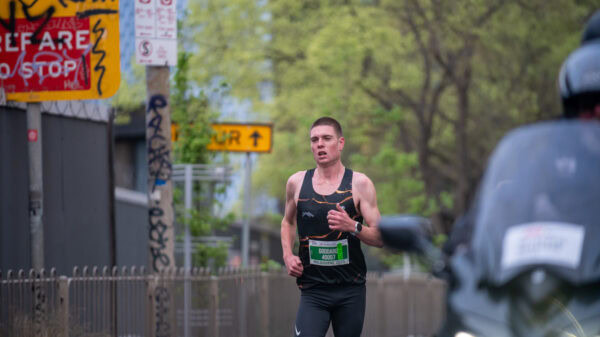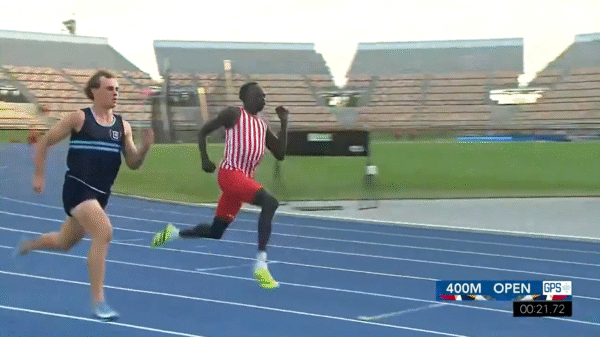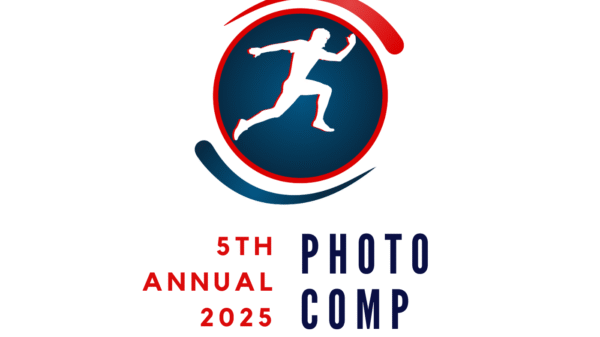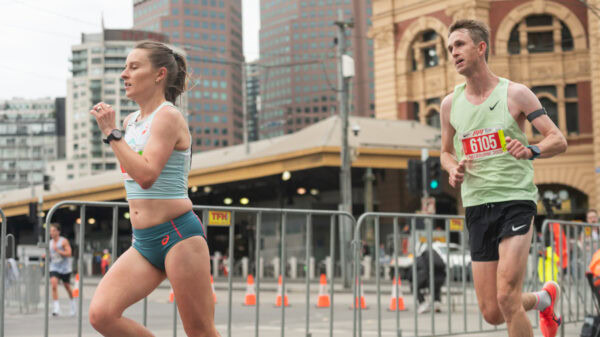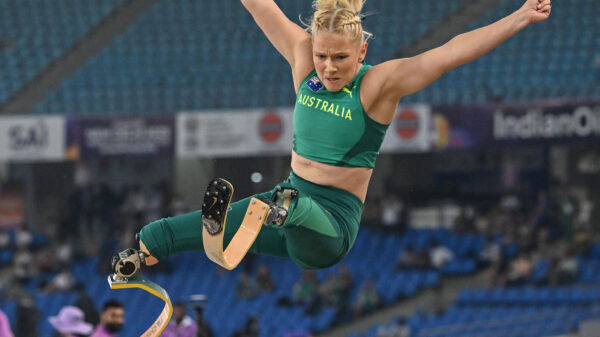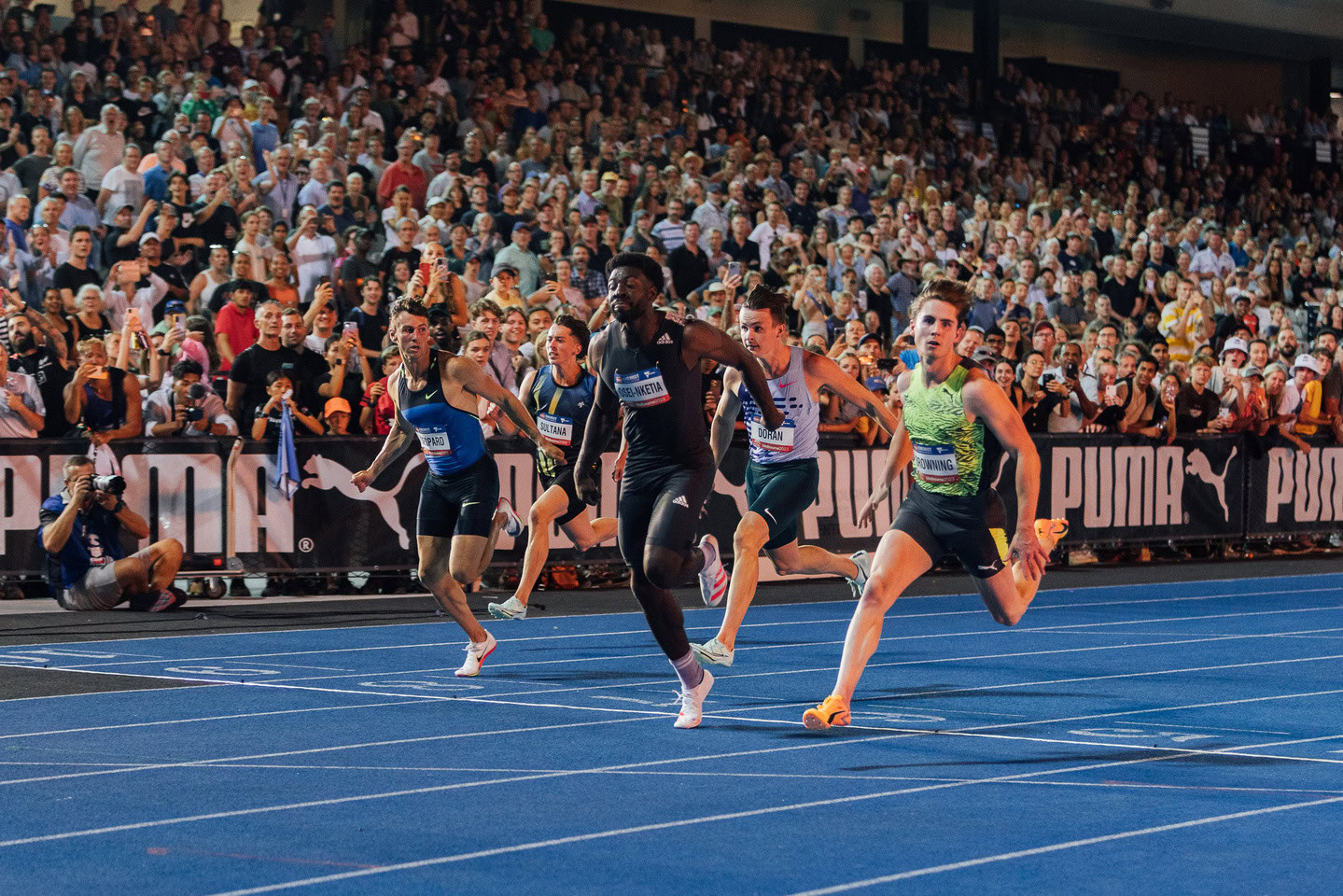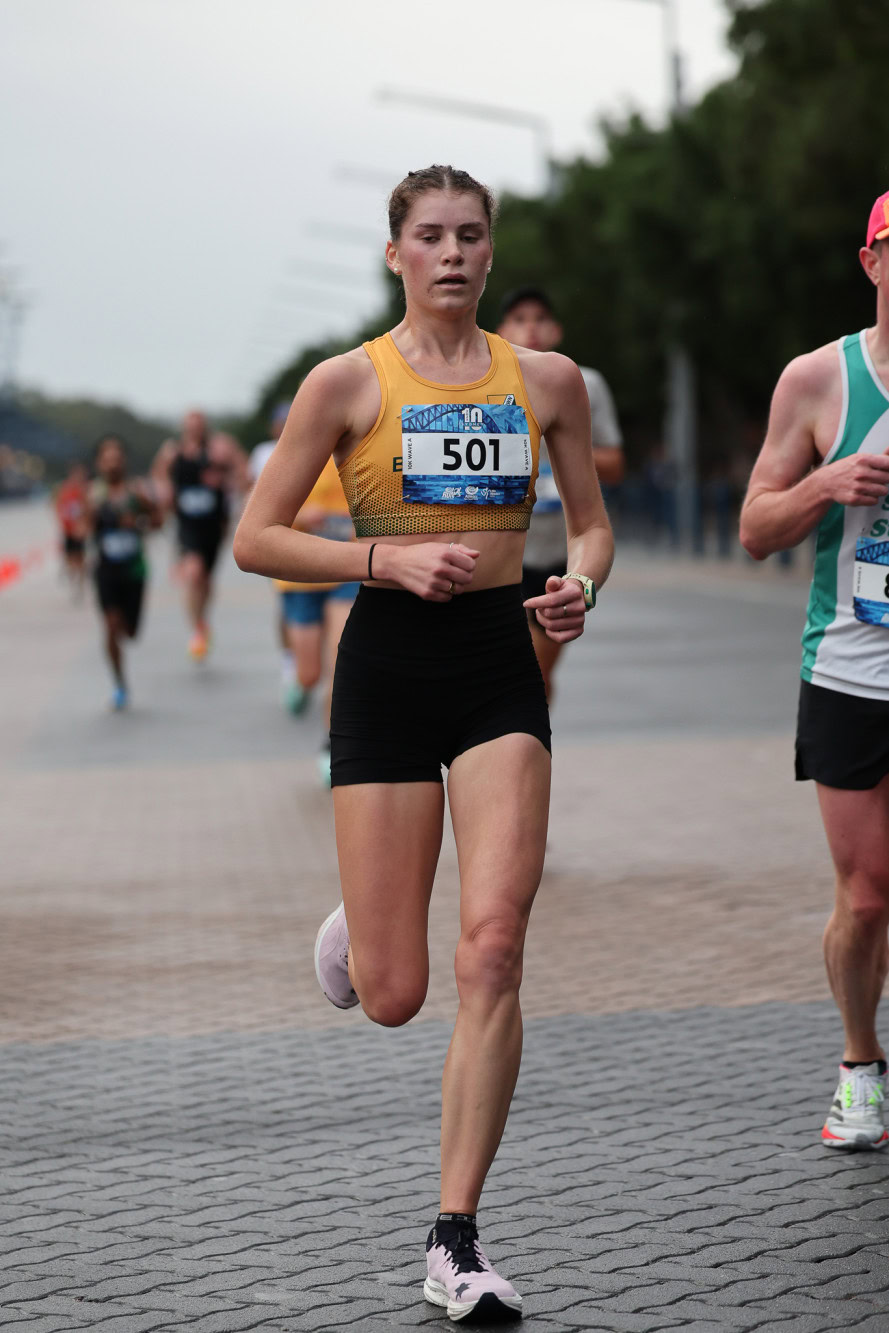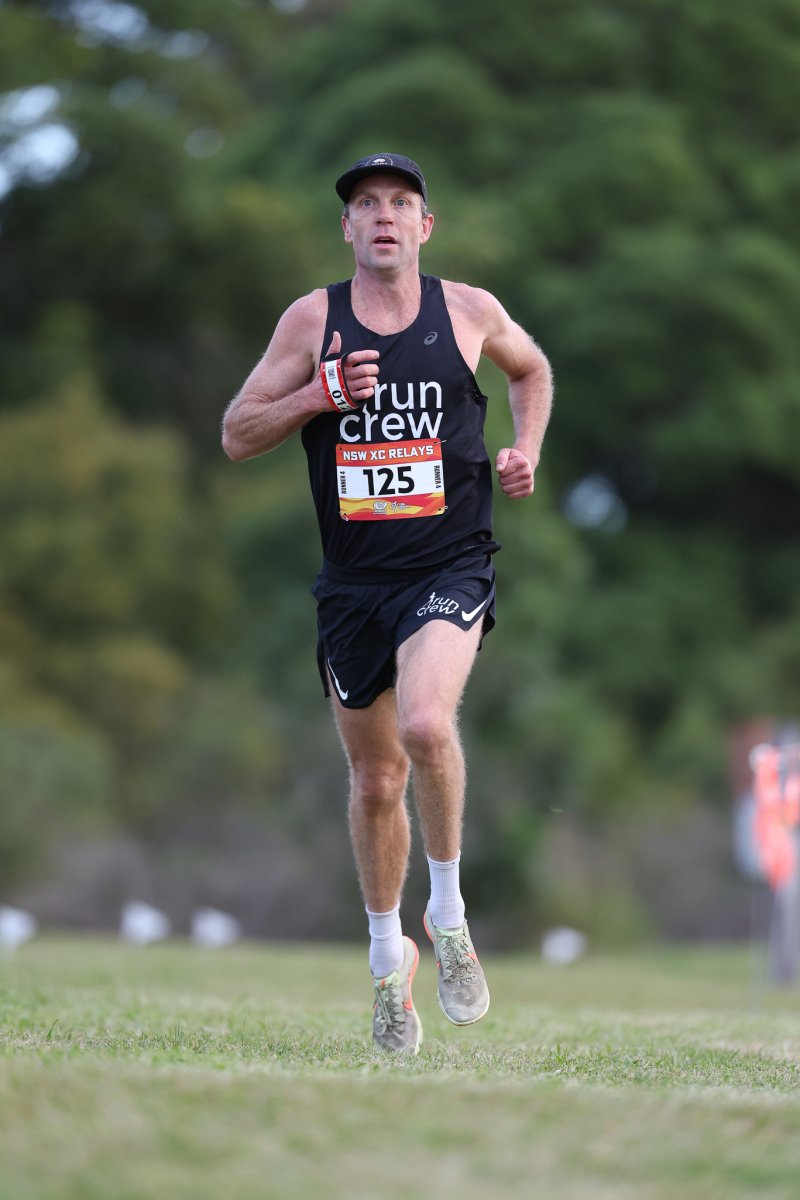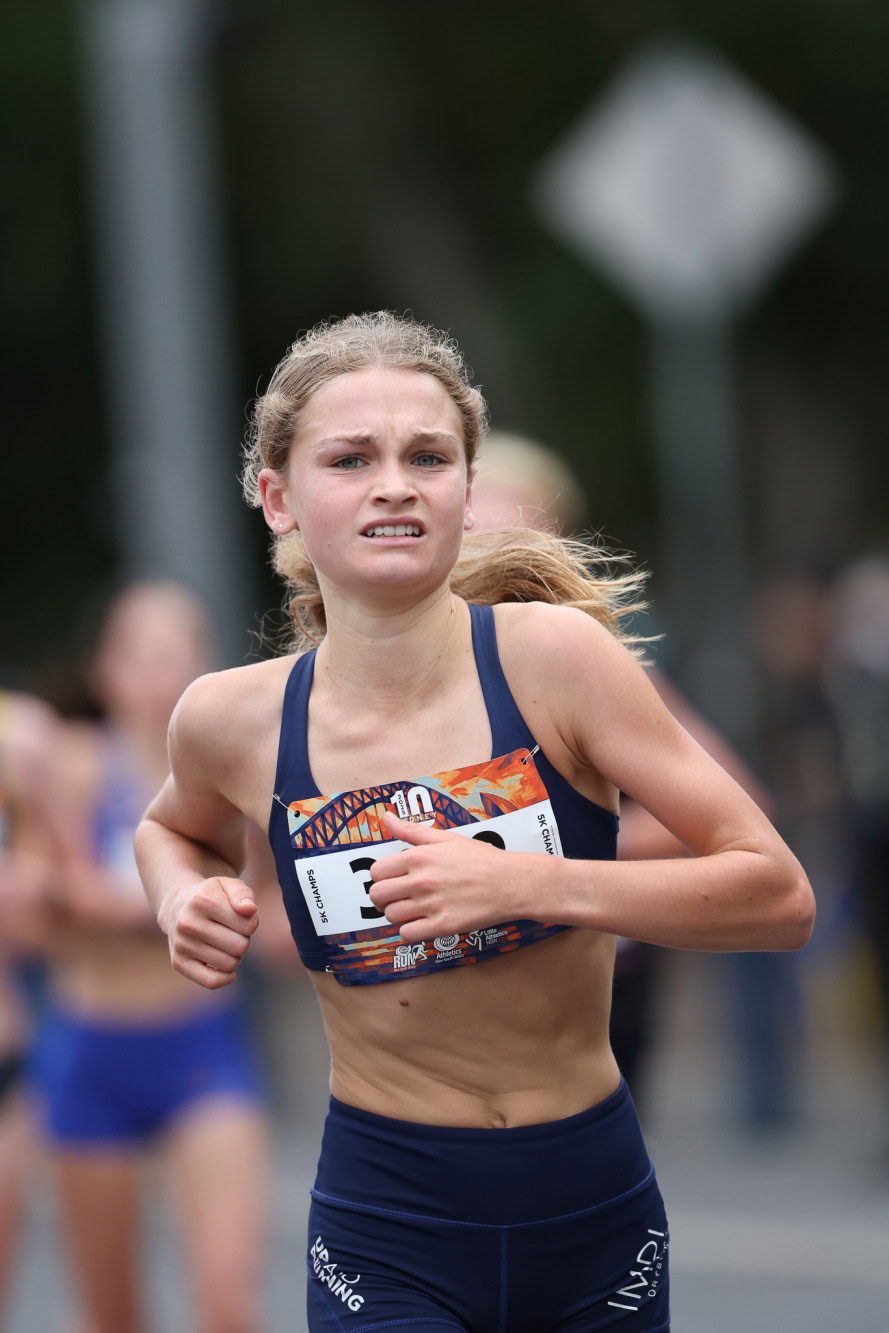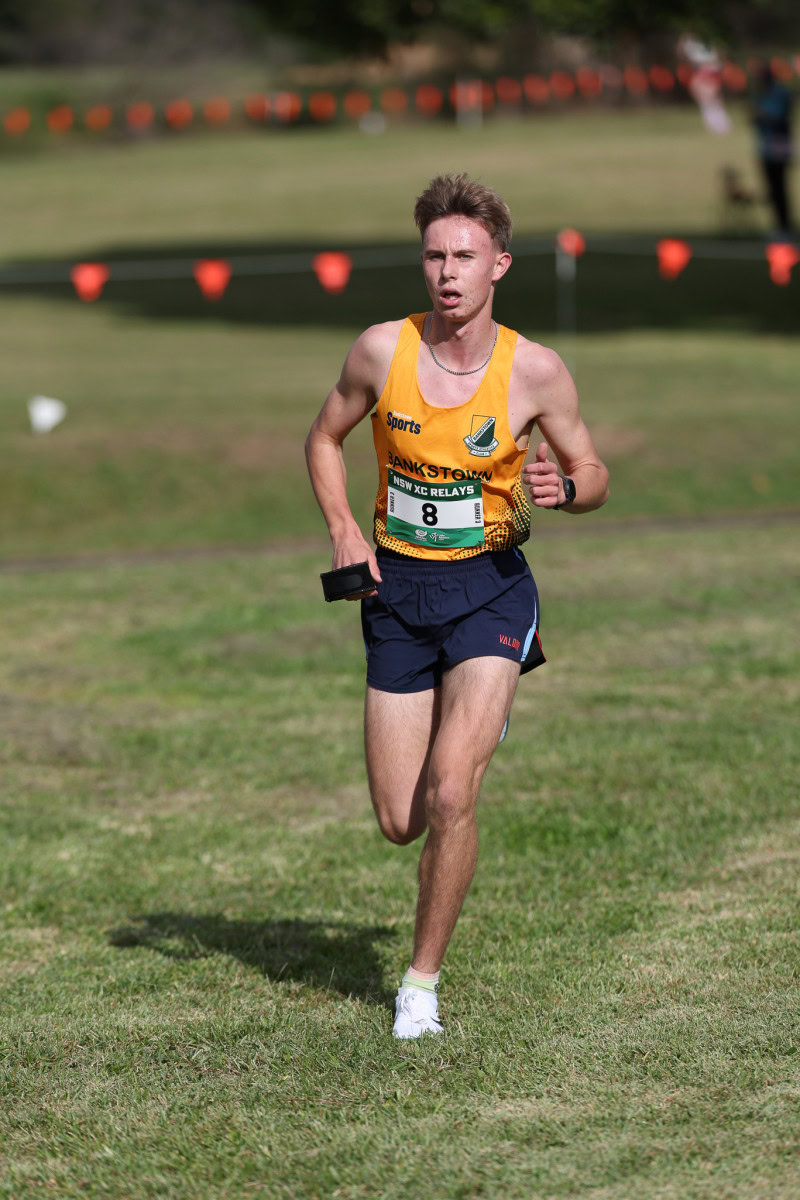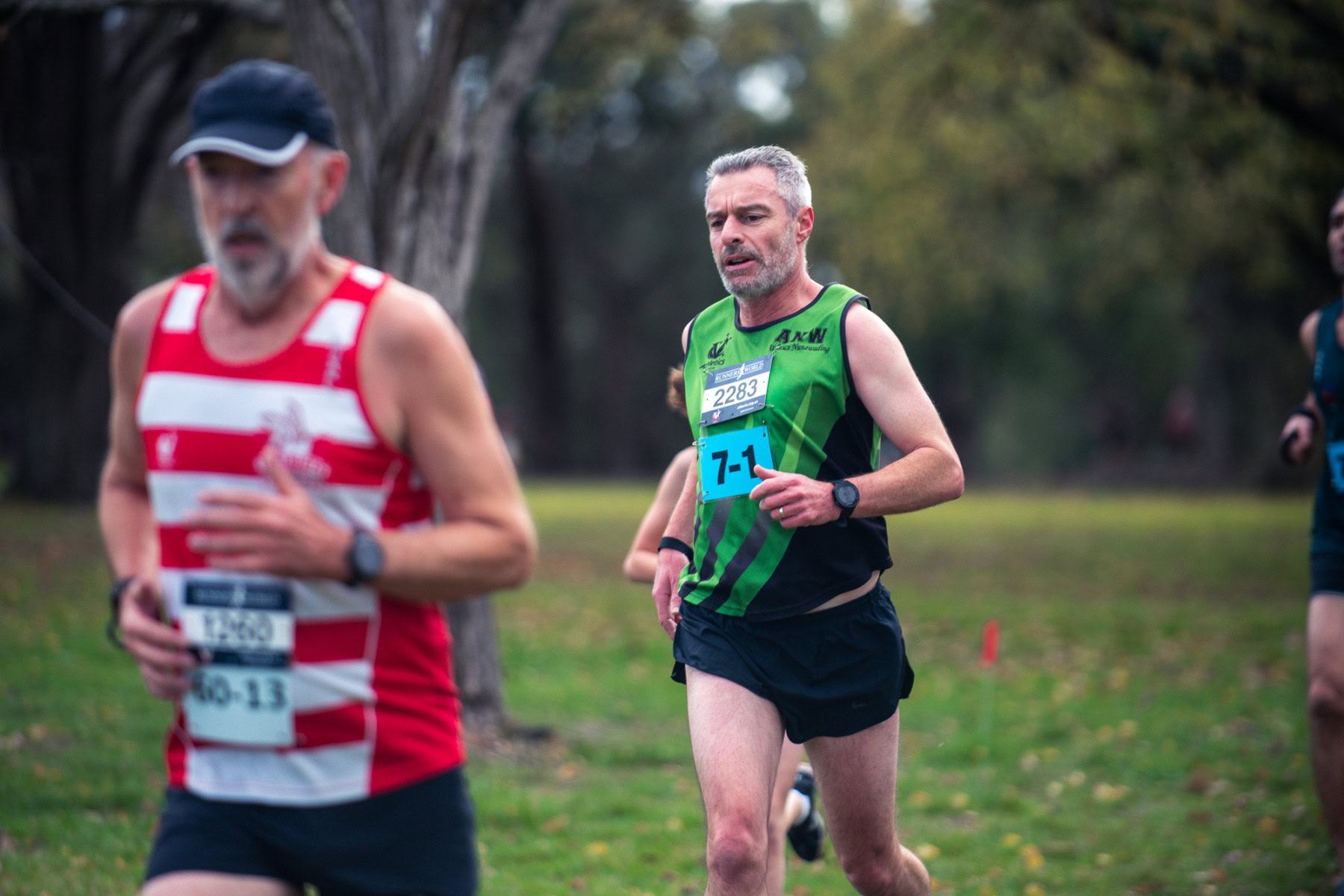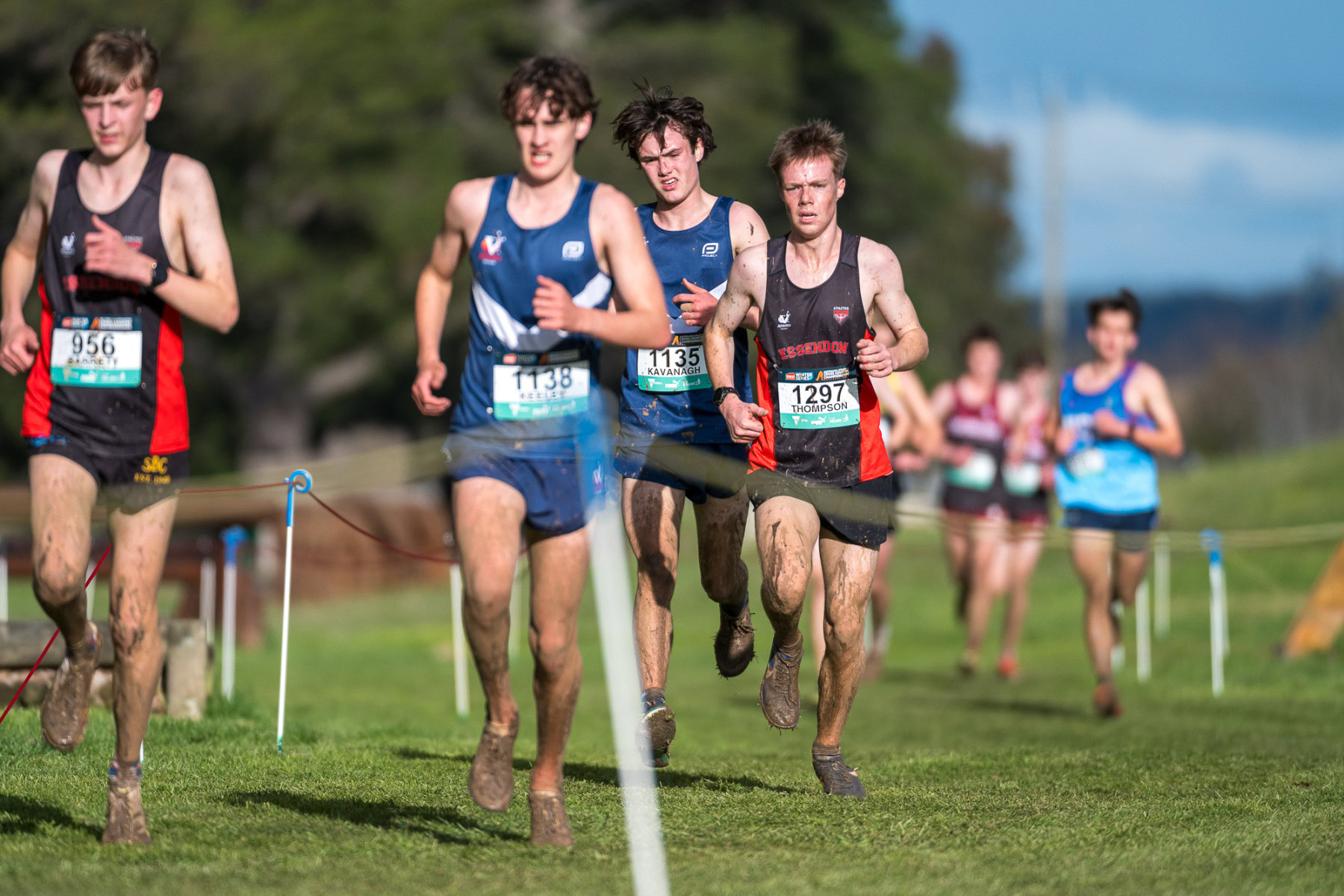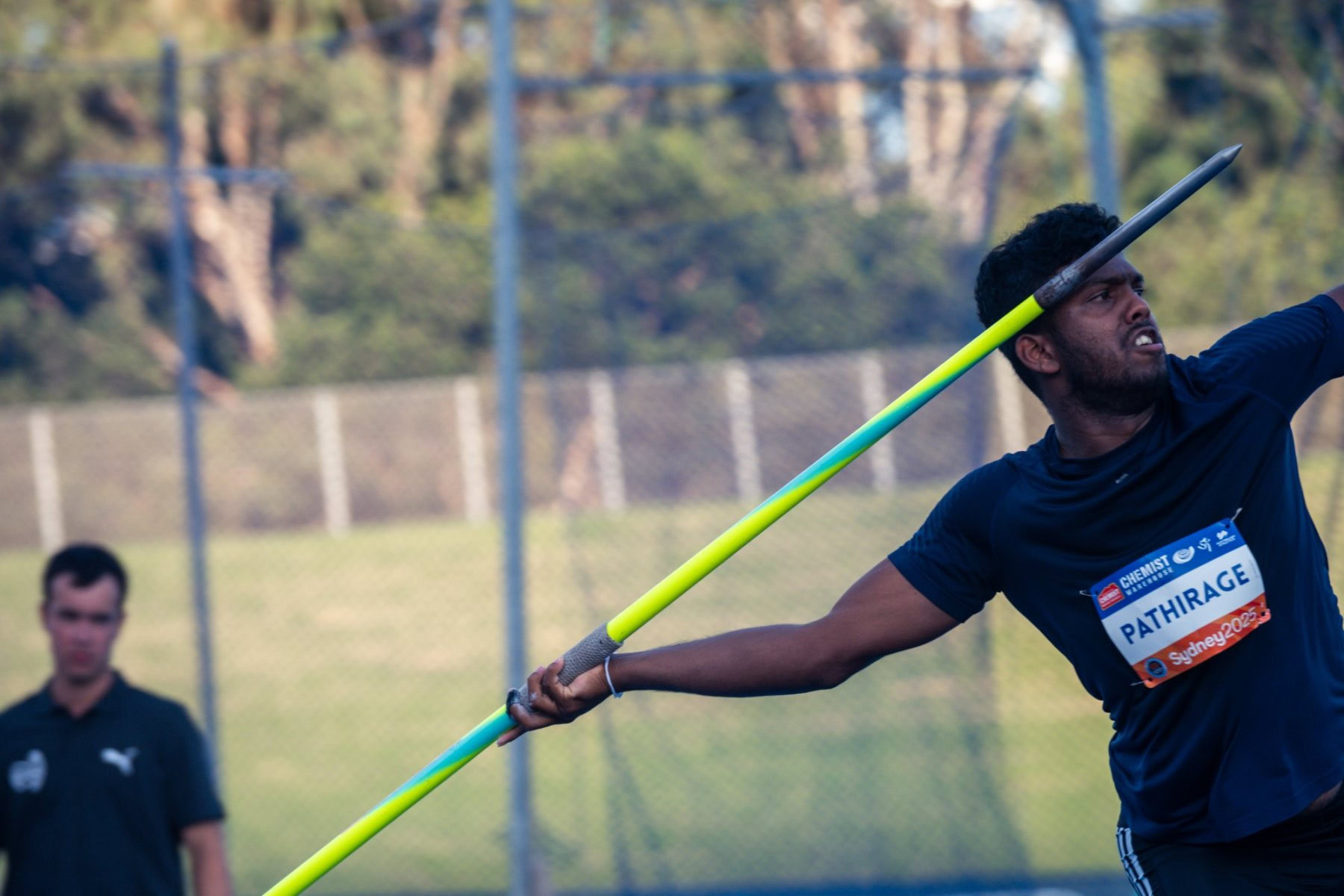2024 is an Olympic year and all eyes for Australia’s athletes will be on qualifying for Paris.
Article updated 31 December 2023
The Australian domestic season is a big part of that journey for many athletes. The major dates and events of the 2023/24 summer of athletics have been announced. Here’s our top 10 insights into the season:
Contents
First some context. For athletes vying for the Olympic team there’s two qualifying pathways:
- Meeting tough entry standards and then being nominated for selection at the discretion of Athletics Australia’s selectors
- Qualifying for a quota position and then then being nominated for selection at the discretion of Athletics Australia’s selectors
There are already 25 Australian athletes who have already met the entry standards, and who are in prime positions to be selected for Paris.
Ultimately all nominations to the Australian Olympic Committee are at the discretion of Athletics Australia’s selectors, who have to follow the Nomination Criteria. There’s a lot of nuance within the criteria (such as relays being implicitly prioritised over individual selection for sprinters), with there being two clear horizons for nomination:
- Immediately after the Australian Championships (11-14 April 2024): athletes who have achieved the entry standard and finish in the first two at Nationals are eligible for nomination/selection at this point (providing they also meet various other critieria, such as competing in another AA summer meet).
- At the end of the qualifying and ranking period (30 June 2024): athletes who have achieved the entry standard or who have a quota position based on World Athletics Rankings, are eligible for nomination/selection.
The World Athletics Rankings use an average of an athlete’s best performances, which are evaluated using a point score based on the quality of performances recorded (using scoring tables) combined with bonus points for the placing in an event, based on the pre-categorised tier of the meet that the event occur. 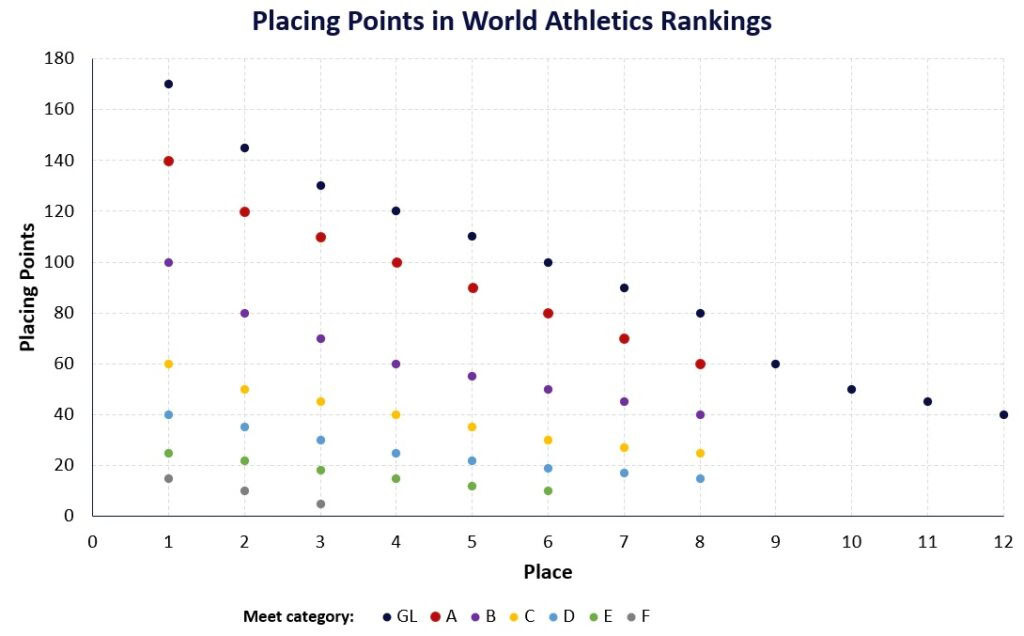
The tiered meet structure means for bonus placing points that:
- A win at an interclub meet or Victorian Milers Club etc (Category F) is worth as much as 4th place at a State Championship
- A win at a State Championships (Category E) is only worth as much as 4th place at the Sydney Track Classic
- A win at the Sydney Track Classic (Category D) is only worth as much as 8th place at the Australian Championships
- A win at the Australian Championships (Category B) is only worth as much as 4th place at the Maurie Plant Meet
- A win at the Maurie Plant Meet (Category A) is only worth a little more than 3rd place at the Oceania Championships (Category GL)

Over 100m, for men, the difference in bonus points between winning an interclub meet and winning the Oceania Championships is worth the equivalent of almost half a second in performance.
As an example, the final quota position in the men’s 100m at the World Championships in Budapest required 1210 points. That’s equivalent to winning each of the meets in the following times:
- Interclub: 10.03 seconds
- State Championships: 10.06 seconds
- Sydney Track Classic: 10.11 seconds
- Australian Championships: 10.29 seconds
- Maurie Plant Meet: 10.41 seconds
- Oceania Championships: 10.50 seconds
Conversely, a 10.11 second run is worth the following points in winning the following meets:
- Interclub: 1185 points
- State Championships: 1195 points
- Sydney Track Classic: 1210 points (the average required to qualify for a quota position)
- Australian Championships: 1270 points
- Maurie Plant Meet: 1310 points
- Oceania Championships: 1340 points
The moral of the story: run fast and win – when it counts.
Adelaide x2
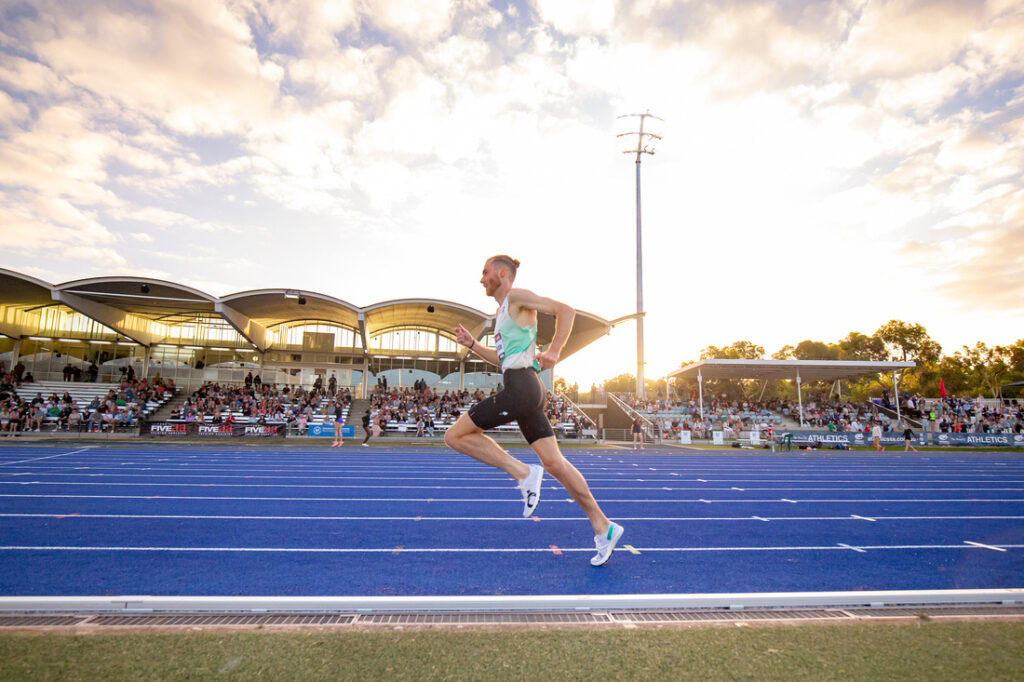
All roads lead to Adelaide for the Australian Championships – the 101st staging. The Open and U20 events will take place Thursday 11 – Sunday 14 April, with U14 through to U18 events following on the Monday – Friday, 15 – 19 April.
The Open Nationals were last held in Adelaide in 1992. This season’s event is a key point scoring opportunity for World Athletics Ranking Points, with every event having a Category B classification.
Earlier in the season the Adelaide Invitational takes place on 10 February. This World Challenger/Category C event has been a popular early season event for many athletes since appearing on the calendar two years ago.
>> More information about the Australian Championships
>> More information about the Adelaide Invitational
Mighty Melbourne Meet
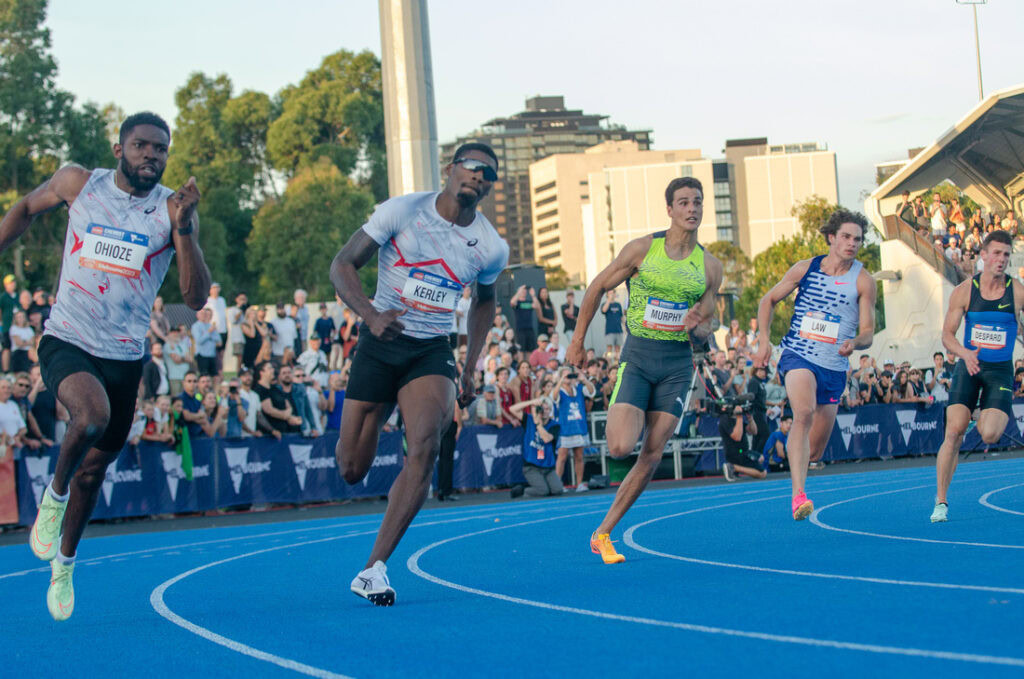
The Maurie Plant Meet – Melbourne returns as the pinnacle event of the Australia domestic season, being a World Contintental Tour – Gold event/Category A event.
To be held at Lakeside Stadium in the evening of Thursday 15 February, the electric atmosphere of last year’s event is anticipated to be replicated and spur athletes to great achievements. There will be US$250,000 in prize money on offer for the meet, and with a requirement that for 12 events on the program that it has at least 3 athletes per event ranked in the Top 50 in the world (on a 3-per-nation basis), will see some international flavour challenging Australia’s best.
>> More information about the Maurie Plant Meet – Melbourne
New Zealand near
Other than the Australian Championships and Maurie Plant Meet, the best World Ranking point scoring opportunities come in New Zealand, with meets in Chirstchurch (24 February) and Auckland (10 March) meets, which are World Continental Tour – Bronze events with a Category C rating. For those athletes ready to fly across the ditch in January, there’s some great point scoring opportunities on offer against New Zealand’s top athletes – a fourth place finish gets the same bonus points as winning in Sydney or Adelaide.
Bye bye Brisbane and see you later SOPAC
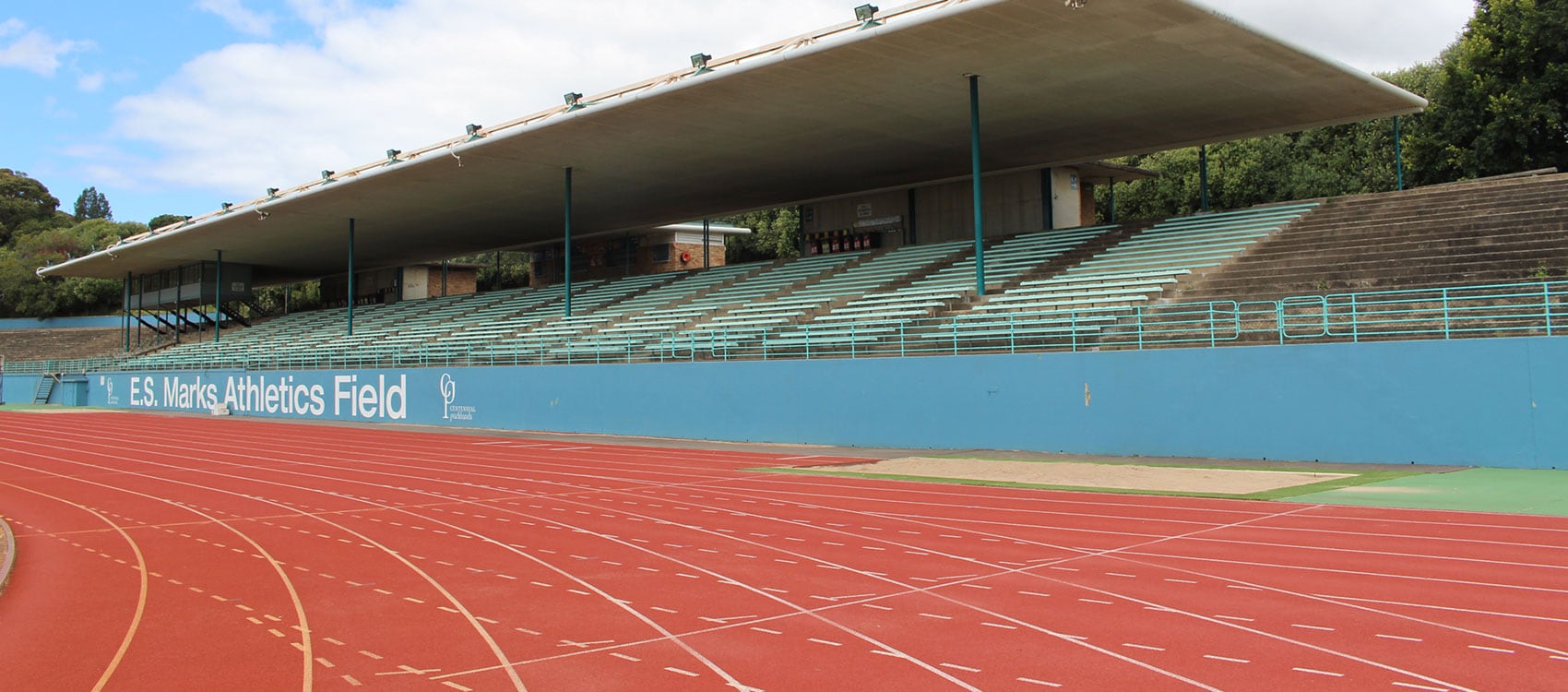
Whether it be at the vacuous and aging Queensland Sport & Athletics Centre or the poorly lit next-door State Athletics Facility, Brisbane has been a popular performance venue in previous summers. Not so this one coming, with the Brisbane Track Classic disappearing from the summer schedule.
The highest level meet held in Queensland is now the Queensland Champsionships (14-17 March), a Category E meet on par with each other State Championship.
Sydney’s premier athletics venue, Sydney Olympic Park Athletic Centre, also won’t be hosting the Sydney Track Classic on 23 March. Instead, with a blast of nostalgia, ES Marks in Sydney’s eastern suburbs – the home in athletics in NSW prior to 1993 – is the venue for the Category D meet. Read more about the thinking behind moving the meet, in our interview with Athletics NSW Chair, Matthew Whitbread.
Join the conversation on our Facebook page
SOPAC will still be use on the same day, for the Little Athletics NSW State Championships. In 2011 the Sydney Track Classic was able to be held at the conclusion of the first day of the Little A’s State Championships at SOPAC. It’s not to be in 2023 and the shifting of Australia’s top athletes to a second rate venue, while providing a unique environment that athletes and spectators will no doubt embrace for its novelty on this occasion, reflects an unfortunate regression in the level of unity in the sport in NSW.
>> More information about the Sydney Track Classic
Canberra calling
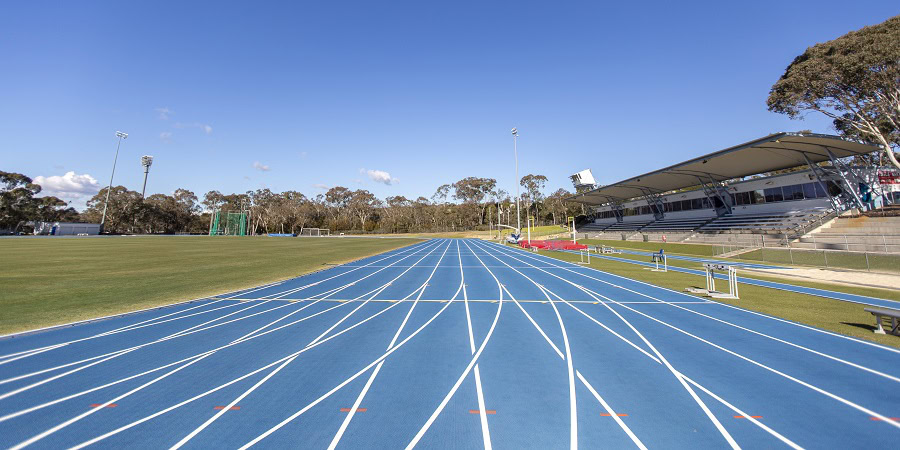
Six weeks out from Nationals, with a large range of events on the program, the nation’s capital is calling as one of the big opportunities of the summer.
>> More information about the Canberra Track Classic
Zatopek reimagined

Australia’s most enduring one-day meet, the Zatopek:10, underwent a makeover with the first year of a sponsorship of On. While maintaining the two 10,000m events as its centrepoint (which remain the Australian Championship for the event) an entertainment focused evening featuring 600m races and a fun run enlivened Lakeside Stadium on Saturday 2 December as part of the On Track Nights concept.
The meet only had Category F status, but for the 10,000m events will have Category B status as the Australian Championship for the event.
>> More information about the Zatopek 10
Magical miles
The Albie Thomas Mile – originally scheduled for just before Christmas – but now in the week after the Sydney Track Classic on 28 March, at Sydney’s Crest is the Australian Mile Championships and is a Category D meet. Similarly, at the Maurie Plant Meet in Melbourne on 15 February, the John Landy Mile is on the program.
Mile races can be used to reach a entry standard (3:50.40 and 4:20.90, compared to 3:33.50 and 4:02.50 for 1500m) and accrue World Ranking points for the 1500m. However, ranking points are unlikely to be relevant for selection in the event, with three men (Stewart McSweyn, Adam Spencer and Cameron Myers)and women (Linden Hall, Jessica Hull and Abbey Caldwell) already having the entry standards. How meaningful these miles will be is yet to be seen – will any other athletes use these races to chase the 3:50 and 4:20 marks?
Notwithstanding, there’s always something magical about seeing men run under 4 minutes for the mile (a feat first achieved in 1954 – the same year as Everest was first climbed, but achieved by less people who have climbed the world’s highest peak), which Australia’s top talent should be able to achieve even in tactical races.
Albie Thomas Mile – Meet Records: Jordan Gusman (3:57.29, 2017) and Keely Small (4:33.57, 2020)
Melbourne Track Classic Mile – Meet Record: Simon Doyle (3:51.54, 1991)
>> More information about the Albie Thomas Mile
Cross country curtailed
The World Cross Country Championships moved venue and time to Belgrade on 30 March, so a week after the Sydney Track Classic and a week-and-a-half prior to Nationals. It’s likely to be de-prioritised by most athletes compared to the 2023 home event in Bathurst (and there will be no repeat of the mixed relay bronze medal, with the selection criteria advising athletes to instead focus on Olympic selection). Accordingly, there’s was originally no selection trial race scheduled (with this being later amended – a trial will take place on Friday 1 March, the day prior to the Canberra Track Classic). This, along with Zatopek, will be used by selectors when considering selection.
There’s also the World Indoor Championships on 1-3 March in Glasgow, which are tough to qualify for, but which some athletes might choose to compete in and miss the Canberra Track Classic.
The home of the PB

Box Hill comes to mind as a perfect location for time trialling performances, but any sanctioned meet, such as State Championships, Victorian Milers Club or various interclub meets could fit the bill equally.
There’s such minimal advantage of recording a win at these meets (for World Ranking placing point purposes) compared to doing so at better level meets over summer or overseas, and with this lesser pressure and easier to orchestrate pacing environments, they lend themself to make-it-or-break-it time trial efforts over middle distance and distance events. Could we see attempts at the:
Box Hill Burn – 21March 2024 – which has traditionally held 1000m and 5000m races; or
Box Hill Classic – 4 April 2024 – which has traditionally held 800m, 1500m and 3000m races.
>> More information about the Box Hill Burn
>> More information about the Box Hill Classic
Only in Oceania…
The most important qualifying meet for those athletes relying on the World Athletics Rankings quota pathway for selection is the Oceania Championships. It has hugely disproportionate placing points compared to the quality of the fields (the meet has less depth than the Australian Championships, but is worth more for qualifying points), so being one of Australia’s three representatives in the events is a huge boost towards qualifying for Paris.
The meet will be held in Fiji from 4-8 June, with the track currently being resurfaced. There will also be another sanctioned meet, of Continental Level standard (Category C), to occur beforehand at the same venue, on 1 June.
The Calendar – by Category
Category A
- Thursday 15 February: Maurie Plant Meet – Melbourne
Category B
- Thursday 11 – Sunday 14 April: Australian Championships, Adelaide
Category C
- Saturday 10 February: Adelaide Track Classic
- Saturday 24 February: International Track Meet, Christchurch NZL
- Sunday 10 March: Sir Graeme Douglas Memorial Track Classic, Auckland NZL
Category D
- Saturday 2 March: Canberra Track Classic
- Saturday 23 March: Sydney Track Classic
- Saturday 28 March: Albie Thomas Mile, Sydney
Category E
Various State Championships
Category F
- Saturday 2 December: Zatopek:10 (Category B for 10,000m only)


